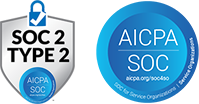What Is Business Casual Attire?
Business casual attire is a dress code that blends professional styling with everyday comfort. It replaces formal suits with items like tailored trousers, chinos, knee-length skirts, collared shirts, blouses, sweaters, and loafers—striking a polished yet approachable look suitable for modern workplaces.
Why Business Casual Attire Matters
Adopting business casual attire supports a productive and engaging work environment by projecting professionalism without stifling comfort. It reduces barriers to collaboration, lowers uniform costs, and fosters a culture where employees feel both respected and at ease—improving morale and brand perception.
Where Business Casual Attire Is Used
- Corporate Offices: Daily workdays where traditional suits aren’t required.
- Client Meetings: Situations demanding a professional yet relaxed appearance.
- Casual Fridays: End-of-week dress-down policies that maintain decorum.
- Tech & Creative Firms: Environments valuing flexibility, innovation, and personal style.
- Hybrid Work: Video calls and in-office days where comfort and presentation both matter.
Business Casual Attire Key Benefits
- Enhanced Comfort: Reduces fatigue and improves focus with breathable fabrics.
- Professional Image: Maintains credibility without the formality of full suits.
- Cost Efficiency: Lowers wardrobe expenses by extending wearability of core pieces.
- Inclusivity: Accommodates diverse climates, body types, and cultural norms.
- Brand Consistency: Reinforces organizational culture through unified yet flexible standards.
Best Practices & Examples
- Stick to Neutrals: Navy, gray, black, and beige pair easily across garments.
- Fit Matters: Tailored silhouettes elevate simple shirts and trousers.
- Add Layers: Blazers, cardigans, or vests offer polish and temperature control.
- Limit Denim: Dark-wash, no-distress jeans may work; avoid ripped or overly casual styles.
- Mind the Details: Leather or faux-leather belts, closed-toe shoes, and minimal accessories complete the look.
Conclusion
Business casual attire bridges professionalism and comfort, fostering a culture of confidence and collaboration. By defining clear guidelines—focused on fit, fabric, and formality—organizations empower employees to present their best selves while staying comfortable and productive.
Business Casual Attire FAQs
Q: What is business casual dress code?
Business casual combines traditional office wear with relaxed items: tailored pants or knee-length skirts, collared shirts or blouses, sweaters, and closed-toe shoes. It omits full suits and ties while maintaining a neat, professional appearance.
Q: Are jeans ok for business casual?
Jeans may be acceptable if dark-wash, free of rips or distressing, and paired with tailored tops or blazers. Always verify company policy—some firms restrict denim to Casual Fridays or prohibit it altogether.
Q: What is business casual in India?
In India, business casual often blends Western and local styles: tailored trousers or cotton chinos with collared shirts or kurtas, paired with loafers or ballet flats. Fabrics favor breathable cotton blends suited to regional climates.
Q: What is not acceptable for business casual?
Avoid overly casual items: T-shirts, hoodies, shorts, flip-flops, athletic sneakers, and heavily distressed or embellished garments. Clothing should be free of logos, slogans, or graphics to keep the look polished.



